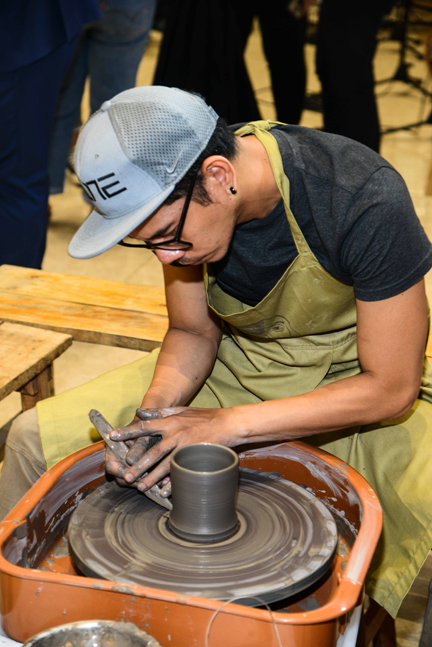By Brandon Ambrosino
3 July 2019
Why do we have sex?
Many of our answers probably include a reference to reproduction. Sex is the primary way that babies are made.
But what will we think about sex if it has almost nothing to do with procreation?
Since the birth of the world’s first “test tube baby” in 1978, around eight million people have been born by IVF. And the number may vastly increase in the future as our tools to identify genetic risks in embryos become more sophisticated. “My strongest prediction is in the future people will still have sex – but not as often for the purpose of making babies,” Henry T Greely, author of The End of Sex And The Future of Human Reproduction, tells me over the phone. “In 20 to 40 years, most people all over the world with good health coverage will choose to conceive in a lab.”
Greely’s book explores some of the legal and ethical challenges facing the science of preimplantation genetic diagnosis (PGD). “Like most things, there will be a fair amount of visceral negative reaction initially, but as time goes on and kids [born via PGD] prove not to have two heads and a tail,” the public will come not only to tolerate but to prefer reproducing non-sexually.
And in that world – a world where babies are made in labs; where pregnancy-via-sexual intercourse is elected only by a minority of women; where sexual ethics have nothing to do with procreative possibilities – what will sex mean?
“What is sex for?”
That’s a question David Halperin asks in a provocative essay of the same name. Sex, we reason, must always have a why. Such reasoning isn’t necessarily a bad thing. After all, to be human means to be curious, intellectually and emotionally. Experiencing sex and theorising about what it could mean seems very natural for animals that spend much of our time engaging in higher-level criticism.
Biologically, there is one an obvious why to human sex. We have sex because it fulfills biological drives, including the necessary drives to procreate and bond. In fact, these are the two whys that have passed down to us in the Western tradition, both of which are organised around a telos, or end goal.
As I wrote in a previous article, it was the stoics who, attempting to curb self-indulgence, tried to fit sex into a scheme of meaning: indulging in the pleasure of sex was alright as long as it was for the purposes of making babies. This ethic worked its way into the Christian tradition, famously through Augustine, and continues to wield enormous influence in the West. According to this framework, sex is ethical when it is practised primarily for procreation. (To clarify, though this is presented as a Christian ethic, its origins lie elsewhere. In fact, the biblical book Song of Solomon celebrates wild, passionate, erotic sex on its own terms, between two lovers – not between a husband and wife, as later Christian commentators wrongly interpreted the poem.)
The other important why for sex comes from Aristotle, as Halperin points out. In Prior Analytics from the 4th Century BCE, the Greek philosopher offers the following syllogism:
“To be loved, then, is preferable to intercourse, according to the nature of erotic desire. Erotic desire, then, is more a desire for love than for intercourse. If it is most of all for that, that is also its end. Either intercourse, then, is not an end at all or it is for the sake of being loved.”
For Aristotle, as Halperin explains, “Love is the telos of erotic desire. It is not love that aims at sex as its goal… It is sex that aims at love.” The real reason we have sex, according to Aristotle’s proof, is not because we want to have sex, but because we want to love and be loved. Sex is not about something, but about something else, something higher, something nobler.
Like many people, Aristotle takes it for granted that sex and love go hand in hand – but he never seeks to demonstrate the soundness of this assumption. What he does demonstrate, however, at least as Halperin reads him, is that “sex is not the final aim of erotic desire”. And if that’s the case, then Halperin thinks the most interesting question to ask isn’t about the relationship between sex and love but the surprising relationship between sex and erotic desire. If Aristotle is correct, then sex has no erotic purpose – its real aim lies elsewhere. In short, sex isn’t actually about sex.
Why do we have sex then? To procreate, sure. To bond, fine. But those are just two of many possible answers. Like many cultural phenomena, sex exceeds its why. Think of food. From a survival standpoint, it makes sense that we eat, and that we eat together – after all, it was advantageous to our ancestors to pool their resources (more for our group means more for me). But when we move from those things to contemporary culinary culture – burgers topped with gold shavings, Instagram food accounts, the cooking network, happy hours with colleagues, after church potluck dinners – it becomes harder and harder to nail down the exact purpose of our relationship to food. The difference between us and many non-human animals is that we regularly take pleasure in doing useless things. We do them, that is, because we enjoy them, because participating in such activities brings us pleasure — the kind that distracts us from any why questions. It’s possible, writes Halperin, that “the act of sex makes sense only when it makes no sense.”
You might also enjoy:
• The invention of heterosexuality
• “I am gay – but I wasn’t born this way”
• How pop culture embraced sexuality “without labels”
Perhaps it’s time to admit that enjoyment is the main reason most of us — including the most pious among us — have sex.
To be fair, there’s usually a point to having sex, otherwise we’d be doing something else. But the last few decades have seen us challenging the ideas that sex should only be had for specific purposes.
The pill was revolutionary on this front, giving some people plenty to fear. In a 1968 Readers Digest article, author Pearl Buck said, "Everyone knows what the pill is. It is a small object – yet its potential effect upon our society many be even more devastating than the nuclear bomb." Like a good many conservatives’ ideas, Buck’s argument seemed to be informed by a hysteria that sex without why would spell the end of civilisation. For these folks, the so-called sexual revolution was to blame for modern relaxed views on sex practices.
While the sexual revolution is often used as a bogeyman to end rather than contribute to important conversations, sweeping changes in public perceptions of sex beginning in the 60s have been noted by researchers. In a 2015 research paper, Jean M Twenge, a psychology professor at San Diego State University, examined American attitudes toward sex from the 1970s to 2010s. Her conclusion: “Between the 1970s and the 2010s, Americans became more accepting of non-marital sex.”
Consistent with past research finding declines in religious orientation and increases in individualistic traits, more Americans believe that sexuality need not be restricted by social conventions. Recent generations are also acting on this belief, reporting a significantly higher number of sexual partners as adults and more having casual sex than those born earlier in the 20th Century.
Twenge points out that within a population, attitudes may still vary for many reasons (depending on age, race, sex, religious beliefs etc), but research shows that “meaningful generational changes in sexual attitudes and behavior have occurred” over time.
Our views on sex, then, are very much the product of our location in a particular time and place. Our sexual ethics aren’t timeless: they evolved, and they will continue to evolve. Perhaps much more quickly than we are prepared for.
What's natural?
Like every human phenomenon, sexual activity came from somewhere. It isn’t just here. We’ve arrived at our sex practices and attitudes and ethics via a long and winding journey from animals that predate us, a journey that goes back to the earliest life in the universe.
But even if we concentrate on our species, we find plenty of evidence that some traditional ideas about sex are less natural than we thought. I once heard an American Evangelical preacher condemn homosexuality with what to his congregation seemed to be a funny joke. “I shouldn’t have to remind you that two men aren’t supposed to be together. Even barnyard animals know that!” What the pastor was arguing was that homosexuality is unnatural, which is why animals don’t practise it.
Except they do. Japanese macaques, fruit flies, flour beetles, albatrosses, bottlenose dolphins – these are just some of the more than 500 species in which homosexuality is observed, as Melissa Hogenboom has written for BBC.
The meaning of heterosexual sex has been constructed in opposition of homosexual sex
To be sure, animals don’t identify as gay, but neither do they identify as not gay. Which brings us to the extremely obvious but rarely contemplated fact – that humans have, at least for the last century, defined themselves based on the kind of sex they have. Heterosexual sex has come to mean something; specifically, its meaning has been constructed in opposition to homosexual sex. If you want to understand what that meaning is, then you might start by asking yourself a question Jonathan Ned Katz poses in The Invention of Heterosexuality: “Whose interests have been served by the division of the world into heterosexual and homosexual?” Any child who was teased, as I was, for appearing gay knows that distinction was not made with their best interests in mind.
What’s interesting is to think about how long the hetero/homo line will continue to hold. A 2019 YouGov survey found that nearly four in 10 millennials don’t identify as “completely heterosexual.” That probably says less about changing sexual orientations than it does about the changing meaning of those orientations. Simply put, it is probably less important today than it was three decades ago to define one’s identity based on sexual activity. In a world where same-sex orientation and activity is largely accepted to be a healthy and natural variety of human sexuality, it is no longer very important to form a public identity based on sexual practices.
Perhaps the more we divorce sex from its why, the less people will think about what sex acts might mean and how those might contribute to an individual’s identity.
The question of the purpose of sex is not the stumbling block to gay culture that it is to straight culture. Some of that is situational: without the prospect of biological pregnancies and (until recently) marriage to tie them down, gay people are free to have sex for the sole purpose of having sex.
I don’t mean to suggest that gay sex doesn’t have a why: it can have many whys, including, of course, love. But gay culture has, historically, been more open to the idea that it might not always have a why, and that it doesn’t always need to. That, of course, might seem to buck those long-held and cherished cultural ideas and ethics about sex, which could perhaps explain the historic prejudice against gay people.
Like many children, I was taught to adjudicate the ethics of a sexual encounter based solely on whether or not it happened in a committed, monogamous relationship (usually marriage). But eventually, I started questioning this standard – particularly because the same people who taught it to me also taught me that humans were created by God a few thousand years ago. If their biology was so bad, then why pay them any mind on sex, which is a biological phenomenon?
I realised that theirs was not a helpful ethical scheme for gay people who are not able to conceive children through a sexual union. It seemed disingenuous at best, and cruel at worst, to advocate for a sexual standard that prevents a sizeable population of human beings from ever reaching it. Most acts of heterosexual sex do not result in a live birth, and yet for some reason that non-procreative sex is never condemned as unnatural, the way non-procreative homosexual sex has often been condemned.
Thankfully, opposition to homosexuality largely continues to decline. A study conducted by the Williams Institute at UCLA School of Law looked at the changing attitudes of people across 141 countries. Eighty, or 57%, of those countries saw an increase in acceptance of LGBT people between the years of 1981 and 2014. It’s not all good news: while the researchers found that the traditionally accepting countries (Iceland, Netherlands, Sweden, Denmark, Andorra, and Norway) have become more tolerant over time, the less accepting countries (Azerbaijan, Bangladesh, Georgia, Ghana) have become even less tolerant. While consistent anti-gay attitudes shouldn’t be overlooked, it’s important to remember that the majority of the countries studied show an increased tolerance for homosexuality.
There are many reasons for widespread acceptance of homosexuality, including positive media portrayals of LGBT people, public support of medical and psychological organisations, and the fact that most people personally know LGBT people. (It’s harder to believe that gay people want to destroy civilisation when we’re your piano teacher or florist or chaplain or local firefighter.)
Granted, gay people – and I’ll focus on men here, since that’s what I’m most familiar with – aren’t always pristine examples of a finely-tuned sex ethic. Gay male communities continue to worship specific body types (muscular, lean, for example), which sends the message that those who don’t live up to those aesthetic standards (most of us) are less deserving or worthy than those who do. These exclusive standards have only become more ubiquitous thanks to technologies like Grindr, where men are reduced to pictures of their body parts, and the undesirable are quickly blocked. “No fats and fems” is, to our shame, an oft-heard refrain on these gay hook-up apps, which means we still have a lot of thinking to do when it comes to our sexual ethics.
But despite these shortcomings, it’s gay culture that has all this time been offering the world new ways to think about sexual ethics – ways that don’t involve procreation or marriage or love or even committed, monogamous relationships. Just consider one 2005 survey, which found 40% of gay couples endorse open relationships compared to 5% of straight couples. If these kinds of sexual experiences really do become the norm – as some suggest – it will have been gay people who opened that door.
I suppose some heterosexuals may take umbrage at these ideas, but it’s difficult to pretend that straight culture has the moral high ground on sexual issues. As I have previously written, popular culture in 2019 is replete with cases of dysfunctional straight relationships, affairs and marriages. The “traditional” heterosexual sexual ethic – which was, as historians have long held, invented in the 19th Century – has been tried and found wanting.
Over the years, various futurists have been predicting what the future of sex will be like. From virtual porn and human augmentation to remote hookups (where people, at a distance, bring each other to orgasm via haptic technologies), the future of sex will be more digital, more synthetic, less organic, less messy.
But while the future will no doubt bring with it major technological changes, we should also consider that some of the biggest changes in the future will involve new ideas.
There will be new ideas about procreation. Since 1978, more than eight million babies have been born through IVF. That number is set to drastically rise the more ubiquitous and affordable the technologies become. Birth control and contraception have also helped separate sex and procreation in our cultural imagination. If Greely’s predictions about PGD are right, then at some point within the next four decades, there will be a sea change when it comes to how babies are born. PGD will become “easy” (accessible and affordable) thanks to developments in genetics and stem cell research. Here’s how Greely sums up the research in The Guardian:
"A couple who wants children will visit a clinic – he will leave a sperm sample; she will leave a skin sample. A week or two later, the prospective parents will receive information on 100 embryos created from their cells, telling them what the embryos’ genomes predict about their future… Then they will select which embryos to move into the womb for possible pregnancy and birth."
People might bristle at the thought of “designer babies,” but when we remember that most people who have babies select each other based on traits, knowing full well that such traits will likely be passed onto their offspring, it gets harder to draw a line between the technologies that Greely writes about and run-of-the-mill reproduction-via-sex.
There will be new ideas about monogamy and commitment. Having one sexual partner for one’s entire adult life seems like a more easily achieved prospect when life expectancy is lower. But life expectancy for humans has been on the rise. From 1960 to 2017, the average increased by 20 years. By 2040, estimates claim life expectancy will be up more than four years. That’s a conservative number to some futurists. Steven Austad, for instance, believes the first human to live to 150 years old was born before 2001. How realistic is it to require someone to limit his- or herself to the same one sex partner for 130 years? But we needn’t look that far ahead. Even now, divorce and remarriage rates continue to climb. According to a 2013 Pew survey, four in 10 American marriages involve the remarriage of at least one of the couple. Perhaps, with longer life expectancies, “till death do us part” will simply cease to be our aim.
There will be new ideas about sexual identity. If sex ceases to mean anything other than sex; if children are not teased for having a “different” sexual orientation; if procreation happens in a lab; might future humans feel free to have sex with men and women at will? Or might they feel comfortable cultivating their own sexual desires? Is the concept of sexual orientation and identity tied to an archaic notion of reproduction? In the future, will words like “heterosexual” and “homosexual” be heard only in the history classroom?
These ideas will continue to become even more mainstream — thanks, in no small part, to the many LGBT people who have, for the past few decades, been inviting the dominant culture to rethink its sexual ethics.
A few years ago at a conference, I heard the philosopher and gender-theorist Judith Butler say, “Maybe the truly queer thing to do with sex is to just enjoy it.” I didn’t agree at the time, but I now realise she was onto something.
Perhaps sex will always be for something – but it will be for a whom, not a what. It will be for us, the people who have it, who enjoy it. The meaning of sex won’t exist apart from the compassion and enjoyment it brings people – the enjoyment of physical sensation, of social bonding, of experimenting.
In the future, the meaning of sex will be sex.











